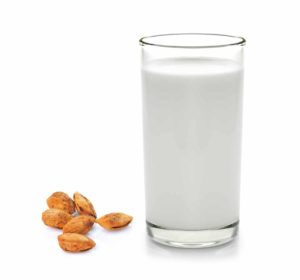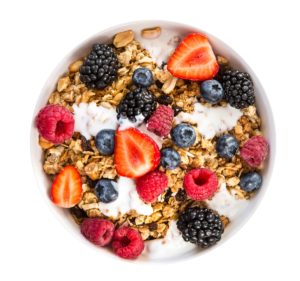Weight Management/Weight Loss
An Action Plan to Combat Adolescent Obesity
Health and fitness professionals can drive positive outcomes and minimize the risk adolescent obesity with these five “rules” for coaching.
Obesity Boosts Melanoma Risk
Add this to the list of dangers associated with obesity: New research from Sweden suggests obesity is a risk factor for developing skin cancer, and weight loss—in this case via bariatric surgery—could reduce the risk of malignant melanoma skin cancer, in particular, by 61%.
The study included 2,007 bariatric surgery patients and 2,040 nonsurgery controls whose skin cancer incidence was monitored for 18 years. Aside from the significantly lower risk of developing malignant melanoma, the surgery group saw a 42% reduction in skin cancer risk in general.
Question of the Month
It will soon be easier for consumers to make better food and beverage decisions when eating out or on the go. The U.S. Food and Drug Administration (FDA) has moved forward with a food labeling law that requires restaurants, grocery stores and convenience stores with 20 or more locations to post calorie counts for standard menu items. Proponents say calorie disclosures on everything from muffins to lattes to Happy Meals will offer more transparency and will likely encourage diners to downsize their consumption.
Keto—Fat Chance of Performing Better
The ketogenic diet, a fat-forward meal plan that limits followers to about 20 grams of daily carbs, may help some people shed a little weight (in the short term), but it might not be good news for their athletic pursuits.
Plant Foods Are Good for Our Gut Bugs
Our bodies host a huge population of microorganisms, dubbed the human microbiome. In recent years, the makeup of critters in our guts has been linked to a plethora of conditions, including depression, heart disease and obesity. And now bug-friendly scientists at the University of California, San Diego School of Medicine have presented initial findings from the American Gut Project, a crowdsourced initiative that analyzes people’s survey responses and fecal samples to better understand how things like diet, lifestyle and disease affect the human microbiome.
The New Dairy Queens
One look at the dairy-free milk aisle and it’s clear that food companies are on a tear. Nondairy milk sales in the U.S. increased by 61% from 2012 to 2017, according to the research firm Mintel. For a variety of reasons, from lactose intolerance to the perceived unhealthfulness of cow’s milk, more consumers are floating their cereal in liquids that no longer seem nontraditional. Here’s how some of the moo-free contenders stack up nutritionally.
Belly Fat vs. Vitamin D
Here’s another good reason for people to reduce their Buddha-bellies: improving their vitamin D status. According to data presented at the 2018 European Society of Endocrinology’s annual meeting in Barcelona, Spain, researchers from the Netherlands found that more body fat around adults’ waistline is associated with lower vitamin D levels. Beyond raising the risk of weak bones, poor vitamin D status could set the stage for other health issues, including heart disease and compromised immunity.
Time to Snub the Clubs?
The prospect of getting extra bang for their food buck has more people perusing
warehouse-style club stores like Costco and Sam’s Club. But the urge to stockpile large amounts of food in the house may lead to calorie overload.
Portion Distortion
No wonder social media feeds are packed with pictures of overflowing smoothie bowls: It appears people feel the types of foods they consume play a bigger role in their health goals than the volume they eat. As a result, a study from Vanderbilt University published in Management Science suggests that those who are trying to maintain a healthy body weight or wishing to shed a few pounds might be prone to overeating “healthy” items like nuts, granola and avocados. The upshot: The public should be educated about practicing portion control—for foods of all kinds.
Exercise and the Gut Microbiome
New research suggests that endurance exercise positively affects the gut microbiome, but only for lean individuals and only for as long as exercise continues. Researchers at the University of Illinois at Urbana-Champaign conducted the study with 32 sedentary men and women—some lean, some obese. The purpose was to explore the impact of endurance exercise on the composition, functional capacity and metabolic output of gut microbiota. Investigators collected samples from the subjects before and after 6 weeks of exercise, then after 6 weeks of no exercise.
Comprehensive Research Project on How to Create an Exercise Habit
24 Hour Fitness® is partnering with the University of Pennsylvania Behavior Change for Good Initiative [BCFG] to support research into what works best for creating lasting exercise habits. With an interdisciplinary team of world-renowned researchers, the BCFG addresses the broader question of how to make positive behavior change stick in aspects of life related to health, education and savings.
Study Launched on Molecular Changes Related to Exercise
In April, Louisiana State University researchers in Baton Rouge held a training for 120 scientists to kick off a national research consortium designed to create a comprehensive map of the body’s molecular responses during and after exercise. The purpose of the $170 million, multicenter, 6-year research project is to promote understanding of how physical activity improves health and prevents disease.
The Connection Between Inactivity and Obesity
Can we say that inactivity and obesity are directly related? Scientists are still addressing this issue. The 2018 Physical Activity Council Participation Report shows that 82.4 million people—28% of the American population—are inactive. At the same time, the Centers for Disease Control and Prevention reports that more than one-third (36.5%) of U.S. adults are obese (NCHS Data Brief, No. 219, November 2015).
Exergaming May Improve Independence Among Older Adults
Maybe you’ve thought about integrating exergaming—exercise combined with video games and other elements of technology—into some of your classes or sessions. Don’t forget to include older adults. A recent study found that seniors with mild cognitive impairment (MCI), a precursor to Alzheimer’s, showed significant improvement in certain complex thinking and memory skills after exergaming.
Equal Calories Burned ≠ Same Results
Many people fixate on the number of exercise calories they burn. New research, sponsored by Les Mills International, shows that even when two group fitness activities (indoor cycling and a resistance workout) were matched for duration and caloric expenditure, they did not have equivalent metabolic effects—which could influence long-term training results. Lead study author Nigel Harris, PhD, said, “The type of exercise used to burn those calories . . . impacts the long-term positive effects that exercise has on the body.”
Question of the Month
America has become a nation of snackers and around-the-clock eaters. But for people who want to get healthy, it might be a good idea to avoid the kitchen more often. Intermittent fasting—cycling between periods of normal consumption and periods of lower calorie intake—has become increasingly popular, and research is starting to show that the approach has promise for weight loss and other health measures.
Portions: We Can Be Happy With Less
Ballooning portion sizes are considered a major player in the startling rise in obesity rates in recent decades, but current research points to evidence that we can turn this around.
A study in the April edition of The American Journal of Clinical Nutrition showed that exposure to smaller food portions can recalibrate people’s perception of how much is enough. In the first of three experiments, volunteers randomly ate either larger (440-calorie) or smaller (220-calorie) portions of the same quiche-and-salad meal.
To Grow Healthier, Happier Adults, Raise Fit Kids
Today’s inactive kids are tomorrow’s unhealthy adults. Our society will pay the price for young people’s profound lack of exercise if we fail to turn this trend around. Few behaviors more significantly influence child health than physical activity. Yet children and adolescents are not moving enough, at the expense of their own health as well as that of their communities. More needs to be done to support families and society in raising fit kids.
Stress and Nutrition
Feeling stressed? You’re not alone! The trick is knowing what to do about it.
Research tells us that stress-relieving strategies include making a concerted effort to minimize stressors, engaging in meditation and physical activity, and nurturing strong social relationships.
That’s good advice, but it ignores the common plan that many of us resort to: the “comfort food” strategy.
Weight Loss Runs in the Family
It turns out that people who make an effort to shed a few pounds aren’t just in it for themselves; they may be helping their significant others trim down, too. Research published in the journal Obesity recounted a University of Connecticut study that monitored the weight loss progress of 130 people for 6 months Ñhalf of them on a structured Weight Watchers® program and the other half on a self-guided program combining education, healthy eating and exercise.


















